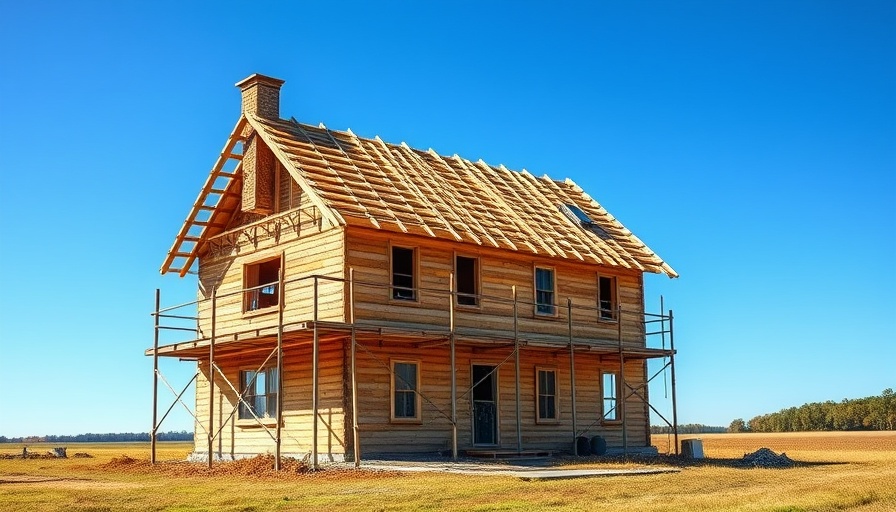
Housing Market Faces Grim Reality with 10% Plunge in Starts
Recent data released by the U.S. Census Bureau and the Department of Housing and Urban Development (HUD) has unveiled a concerning trend in the housing sector. A sharp decline in housing starts, down by nearly 10% in May, signals a worrying stagnation in the market. The seasonally adjusted rate now sits at 1,256,000, marking the lowest levels since 2020 and falling short of expectations.
Key Insights from the Recent Data
While the overall picture suggests some progress in completions, the majority of indicators present a stark contrast. The drop in housing starts is primarily attributed to a significant fall in multi-family groundbreakings, accentuated by a downturn in single-family building permits that points to a cautious future outlook for housing. First American Deputy Chief Economist Odeta Kushi expressed that the month-over-month decline is not surprising, reflecting widespread builder pessimism that impacts future construction trends.
Builder Sentiment and its Implications
The sentiment among builders has reportedly reached one of its lowest levels in the past 13 years, with only April 2020 and December 2022 witnessing lower figures. This growing anxiety is evident in the National Association of Home Builders (NAHB) Housing Market Index (HMI), where optimism regarding future single-family sales has seen a decline. This decline signals a potential slow down in homebuilding activity, critical for economic recovery and job creation in the sector.
The Bright Spot: Completions Show Slight Growth
Interestingly, despite the defeats in starts, there was a 5.4% increase in home completions in May, totaling 1,526,000. This uptick in completions, especially for single-family homes, may serve as a reassuring element amidst the broader market declines. However, multifamily completions have continued to struggle, reflecting the ongoing volatile nature of this sector.
Future Construction Permits: A Cause for Concern
The data concerning building permits offers a gloomy forecast. A decrease of 2% in privately-owned permits indicates less future construction activity, which is crucial for long-term market stability. With single-family permits down by 2.7%, the outlook becomes even more concerning for prospective buyers and housing advocates. This downward trend could lead to housing shortages down the line, amplifying challenges in affordability and availability.
Parallel Example: Lessons from the Pandemic
Looking back on the onset of the pandemic, a similar situation arose where housing starts dropped significantly. Past experiences teach us that recovery can be slow, and behavioral shifts in buyer sentiment during uncertain times can shape market trajectories. Understanding these nuances highlights the importance of steady builder confidence to foster a resilient housing market.
Investing in Education and Insights
As we digest this critical information, it becomes vital for market participants—whether buyers, sellers, or builders—to stay informed. Connecting with networks like Inman Connect can provide essential insights into navigating challenges in the housing industry. This coming San Diego event promises to bolster understanding and adaptability in changing market dynamics.
The volatility in the housing market requires vigilance and adaptability. While completions may rise, the dwindling starts and permits signal challenges. As we venture forward, ensuring reliable education on market trends will be crucial for anyone involved in residential construction or home buying.
 Add Row
Add Row  Add
Add 




Write A Comment